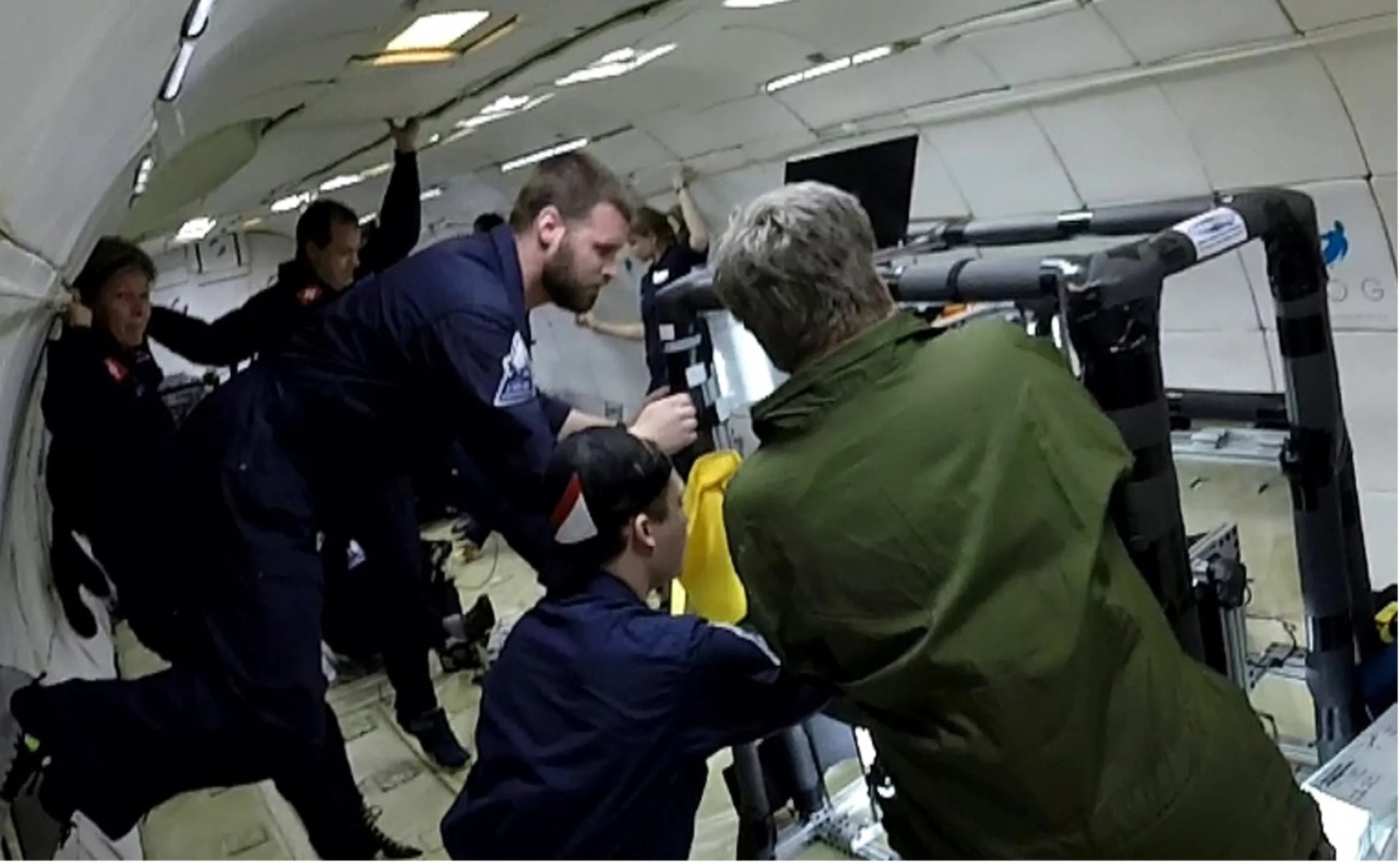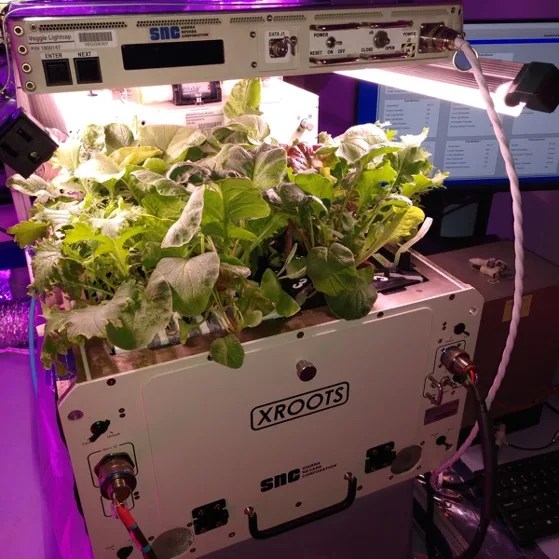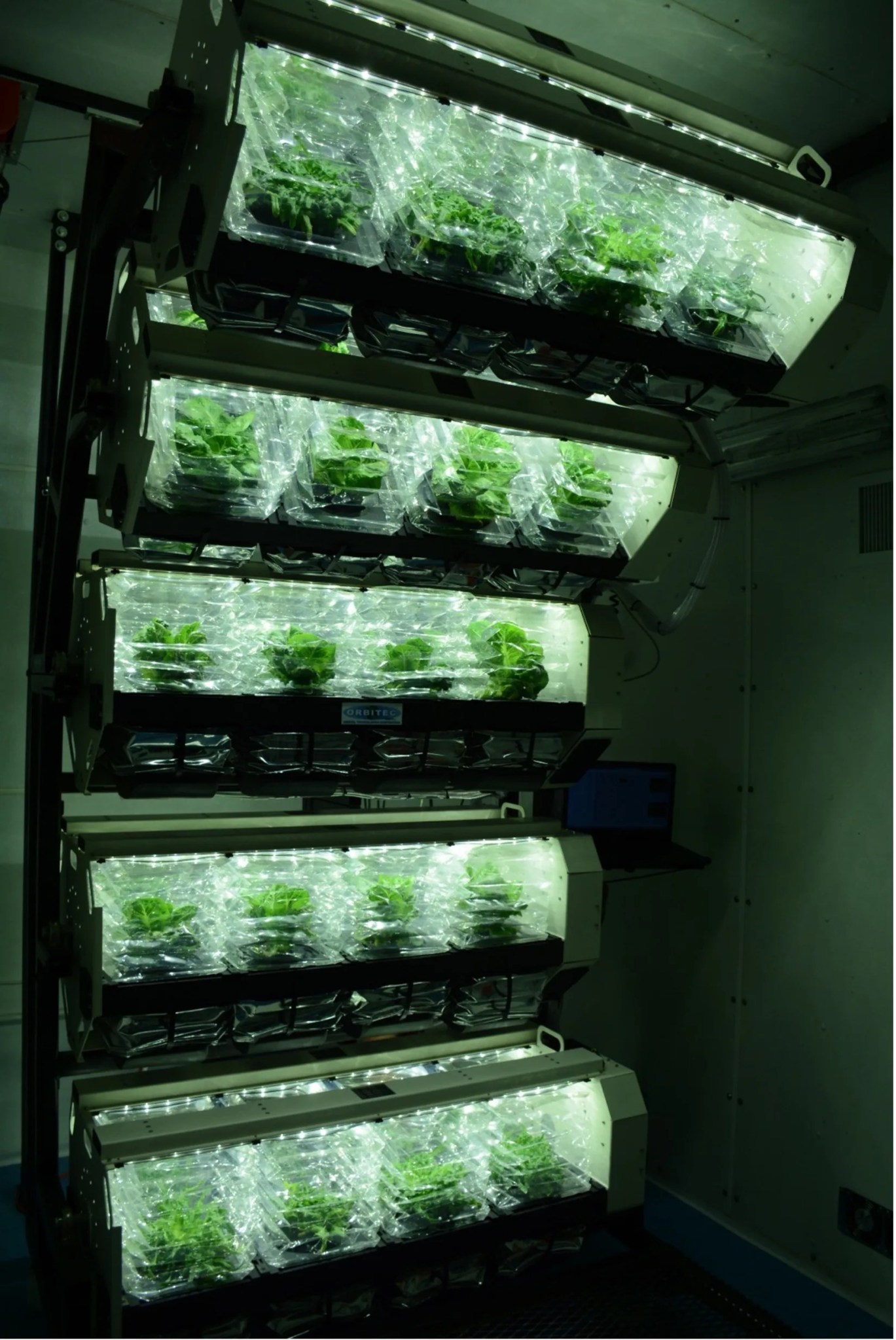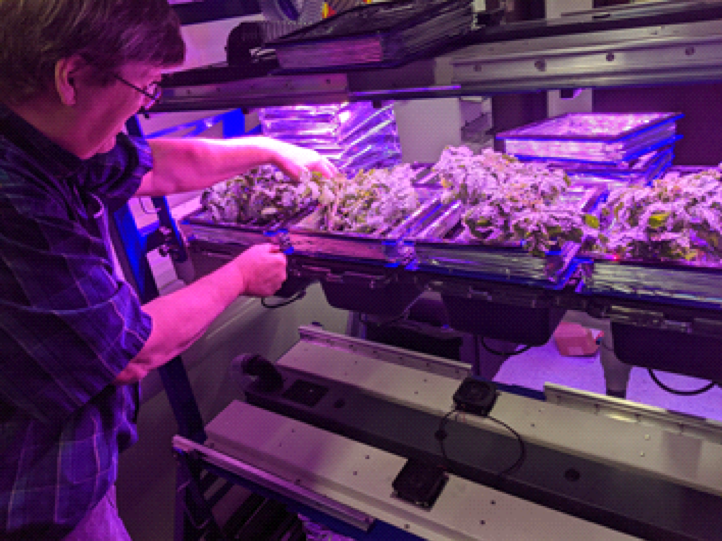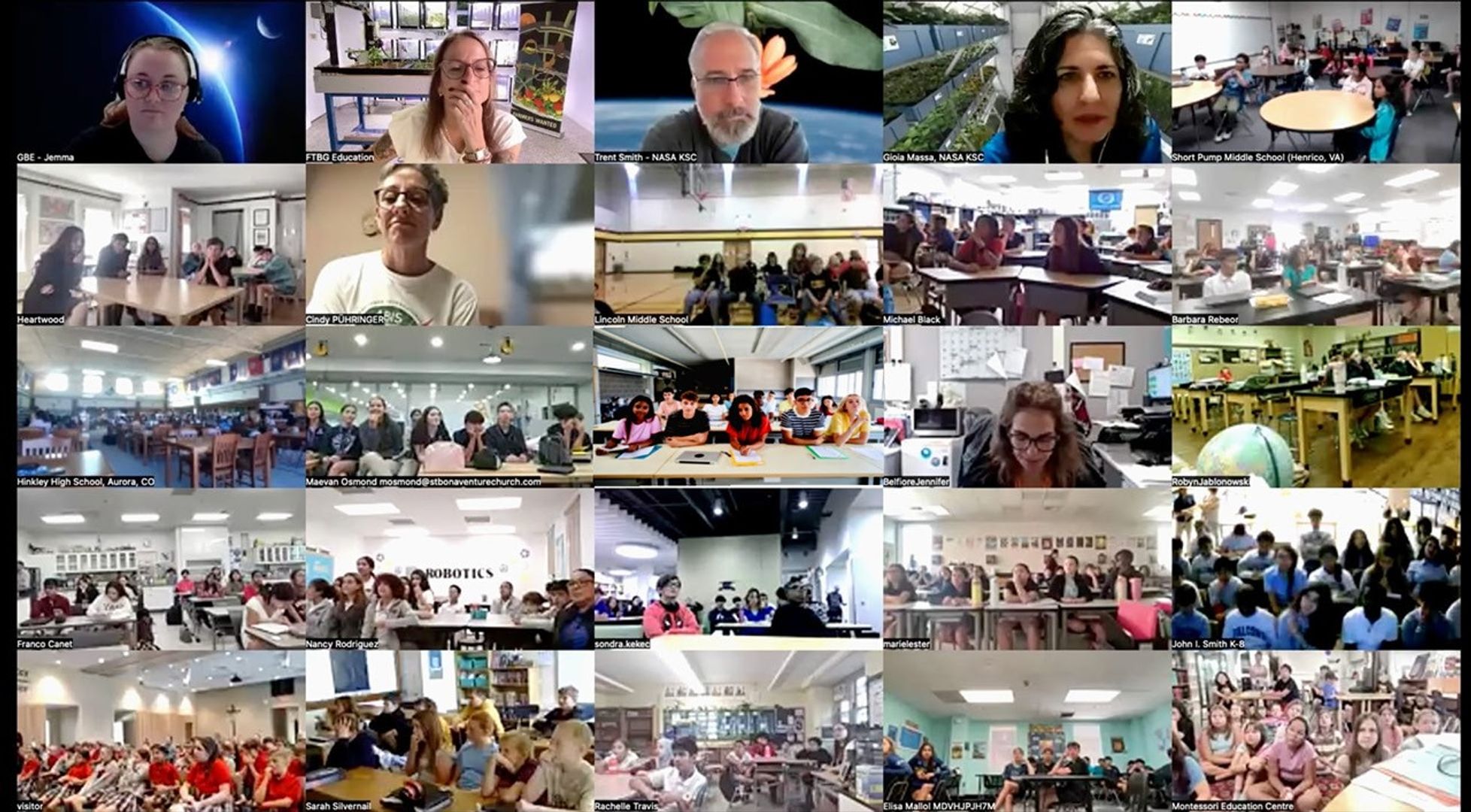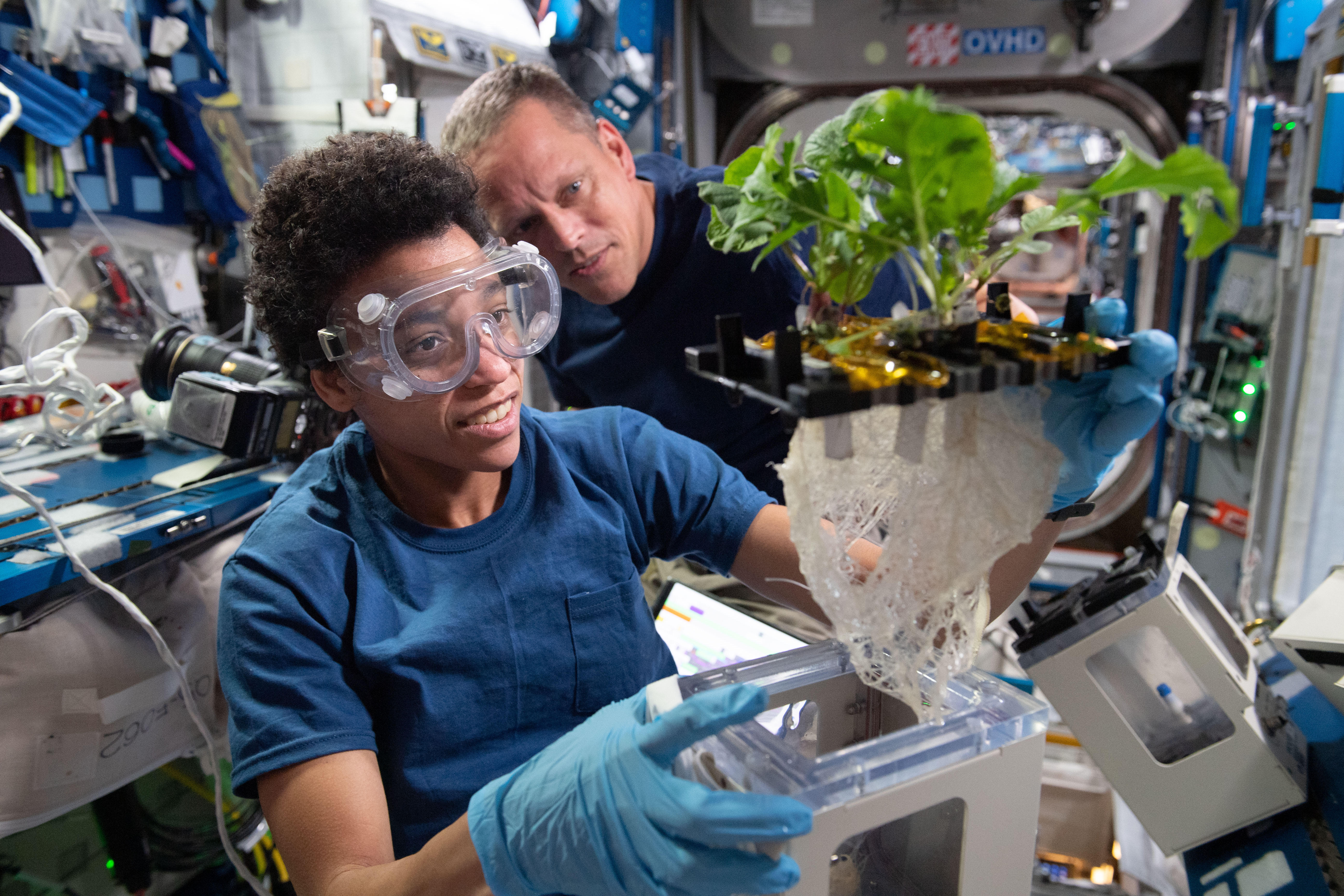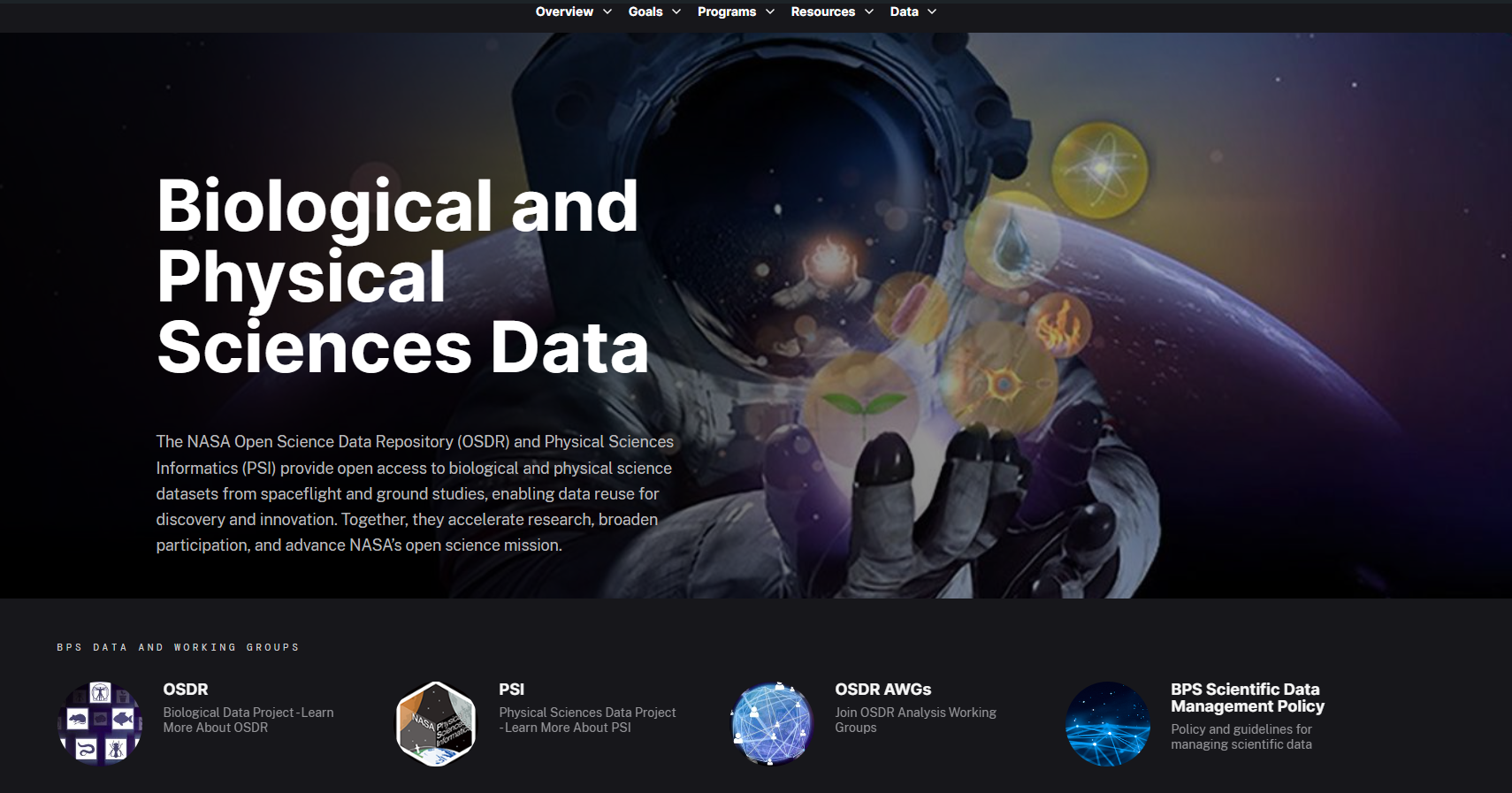PROJECT
eXposed Root On-Orbit Test System (XROOTS)
SNAPSHOT
To investigate techniques that can be scaled for crop production in microgravity, a NASA-sponsored Sierra Space team is developing soilless nutrient delivery and recovery technologies that will be demonstrated via plant tests aboard the International Space Station.
In the future, plants may play a significant role in long-duration life support in space by providing food, producing oxygen, removing carbon dioxide, and purifying water. In the near term, plants will provide a means to supplement crew diet through the production of salad crops as a source of fresh food. For example, Sierra Space is developing the Astro Garden large-scale vegetable production system as a concept to produce sufficient garden vegetables for a crew of four. The eXposed Root On-Orbit Test System (XROOTS) investigation is designed to test critical aspects of the Astro Garden system by using hydroponic and aeroponic techniques to grow crop plants without soil, making large scale plant production in space feasible.
Current space-based plant systems are small and use particulate-media-based water and nutrient delivery systems. These systems do not scale well in a space environment due to mass, containment, maintenance, and sanitation issues. To grow sufficient crops to provide fresh food to crews in space vehicles or habitats it is necessary to develop a water and nutrient delivery system that can be scaled for large volume plant production. Hydroponic and aeroponic techniques could provide a vital alternative to enable plant systems of sufficient size to contribute to future space exploration.
On Earth, these soilless technologies can sustain high productivity rates in commercial settings, provide a degree of configuration flexibility, and are relatively simple to maintain. To be effective in the space environment, however, these systems need to be adapted to operate in microgravity while maintaining the ability to provide sufficient water and nutrients to support crop growth, maintain good aeration in the root zone, and accommodate a variety of plant types including leafy green, fruiting (e.g., tomato), and root (e.g., carrot) crops. Important characteristics for operating in the space environment include low mass, power, volume, and crew-time requirements, coupled with high reliability, cleanability, and maintainability.
The objective of the XROOTS Technology Demonstration is to evaluate soilless nutrient delivery and recovery techniques over the course of plant growth in the microgravity environment of the space station. XROOTS will be integrated with one of the Veggie plant growth units currently being used aboard the space station. Following launch, the base plate and bellows will be removed from the Veggie Facility and the XROOTS module will be mounted below Veggie, and data and power connections established. Veggie will provide lighting and air exchange between the Veggie growing volume containing XROOTS and the space station cabin. After a thorough checkout of the XROOTS system, seed cartridges will be placed in the XROOTS chambers, the nutrient solution will be mixed and placed in the XROOTS reservoir, and the XROOTS module will be powered up and initiated to begin testing.
Operations are planned to occur over the course of six months, with individual tests lasting between 14 and 60 days. XROOTS is designed to observe variables such as nutrient solution spray, flow, and ebb behavior in different capillary configurations and with different operating protocols. XROOTS uses still images and video to observe root development and the interaction of fluid with roots at different growth stages. Data will also be collected using sensors and short periods of crew observation. The XROOTS payload will support testing of two root module configurations, three root/shoot interface designs, and multiple operating protocols (for fluid delivery and recovery). Tests will be conducted with multiple crop species, some through the germination stage and others to full harvest stage.
The Sierra Space XROOTS team has successfully brought the XROOTS from concept to flight hardware completion. Initial efforts included design of special capillary configurations for controlling water movement in the XROOTS root modules, and preliminary testing of these concepts on a parabolic flight aircraft. The team then completed the XROOTS system design and software architecture, and developed a high-fidelity ground unit for preliminary testing. The flight unit was then fabricated and the XROOTS team is currently working to complete final test and checkout of the system prior to turnover to NASA for flight.
The ability to effectively produce fresh food in space will be critical for long-duration NASA missions, including exploration missions. The XROOTS Technology Demonstration is a significant step in transitioning from small-scale plant production systems currently being flown to systems of sufficient scale to supplement the crew’s diet and to enhance the quality of the crew’s habitation. This project will advance the Technology Readiness Levels (TRLs) of plant-culture technologies for space applications, help scale up current space-based plant growth system technologies to levels appropriate for life-support applications, generate information to understand plant-based systems operating in the real space environment, demonstrate root zone configurations that adhere to real-life space vehicle and space operational constraints, and provide data necessary to better evaluate hybrid life-support architectures for different mission scenarios.
Astro Garden (undergoing testing in the Sierra Space Madison WI facility) represents a potential salad crop production system for space habitats
. Credit: Sierra Space
PROJECT LEAD
John Wetzel, Sierra Space (Madison, WI)
SPONSORING ORGANIZATION
SMD Biological and Physical Sciences (BPS) Division, and HEOMD Advanced Exploration Systems (AES)




























